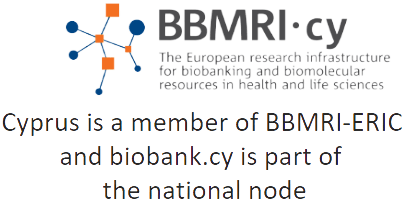COL4Alport
Genetic modifiers predisposing to CKD in Alport and thin basement membrane nephropathy
Let’s find out why some Alport patients do better than others
This project kicked-off in 2016 and aimed to address the question as to why a portion of Alport Syndrome patients, or the related thin basement membrane nephropathy (TBMN), progress to severe outcome, even end-stage renal disease (ESRD), at variable age. In Cyprus we follow a large cohort of TBMN patients with a limited number of heterozygous mutations in the COL4A3 or COL4A4 genes, about 70% of whom share one common founder mutation (COL4A3-Gly1334Glu). Based on our work during the past several years, and despite the consequence of a potential ascertainment bias, about 30% of these patients reach ESRD by age 70-yrs, mean age 56-yrs. Another 50-60% will develop chronic kidney disease of variable stage after the age of 50-yrs. Interestingly, this high predisposition of TBMN patients to develop severe kidney function decline prompted many researchers to diagnose them with Alport syndrome, although of later onset.
While some research, including ours, has identified evidence of modifier genes, much of this phenomenon remains unexplained, requiring more investigations in well followed-up patient cohorts.
Hence, the COL4Alport project aimed to employ the use of unbiased Whole-Exome-Sequencing in a large population of patients, harbouring a limited number of pathogenic heterozygous COL4A mutations. We hypothesized that the size and relative homogeneity of our cohort, both in terms of the shared Cypriot genetic background and the small number of COL4A mutations, will maximize power to identify common and rare variants associated with disease progression. The analysis of the data is in progress.
One candidate genetic modifier has been recapitulated on an Alport mouse model in order to provide proof-of-principle for its contributory effect. We hypothesize that such a functional modifier may play a similar role in the general population, predisposing to chronic renal failure by aging. This, in turn might pave the way for new therapeutic approaches.
Alport Syndrome (AS) is a genetically heterogeneous condition, following X-linked inheritance (COL4A5 gene) or autosomal recessive inheritance, caused by homozygous or compound heterozygous mutations in either the COL4A3 or the COL4A4 gene on chromosome 2q. Digenic inheritance has been described also, with mutations in two of the three genes. Alport syndrome is usually a severe glomerulopathy presenting with microscopic hematuria since childhood, progressing to proteinuria and reaching ESRD by the fourth decade of life in most patients. Heterozygous mutations in the COL4A3 or the COL4A4 gene cause thinner basement membranes, known as TBMN (a disputed term) and until several years ago it was considered a benign condition with excellent prognosis, presenting with isolated microscopic hematuria. We and others showed in the late 2000s that many TBMN patients develop focal and segmental glomerulosclerosis and progress to severe kidney function decline. This is where we sought to find genetic modifiers that on the background of TBMN exacerbate the situation and predispose to a more severe disease outcome, reminiscent to typical Alport syndrome, although with very low percentage of extra renal features, namely hearing loss and ocular findings.
Project Title:
Genetic modifiers predisposing to CKD in Alport and thin basement membrane nephropathy-COL4AlportProject Life Span: March 2016-December 2020Project Budget: €300,000Funded by

Implemented by







